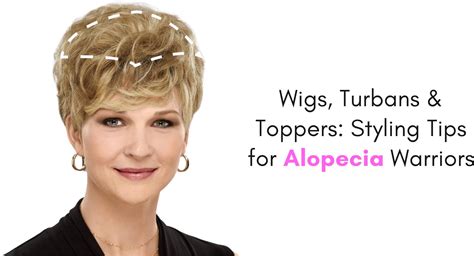Introduction

Dealing with alopecia can be a daunting experience, affecting not just your physical appearance but also your confidence. Wigs offer a versatile and effective solution to conceal hair loss, restoring your self-esteem and enhancing your well-being. With a wide range of options available, choosing the right wig can be overwhelming. This comprehensive guide will delve into the world of wigs for alopecia, empowering you with the knowledge to make an informed decision and find the perfect match for your unique needs.
Understanding Alopecia
Alopecia encompasses a group of medical conditions that result in partial or complete hair loss. It affects both men and women, with varying degrees of severity. According to the National Alopecia Areata Foundation, approximately 6.8 million Americans suffer from alopecia areata, the most common type of alopecia.
Types of Wigs for Alopecia
Synthetic wigs are crafted from artificial fibers, providing a budget-friendly option. They come in a wide array of colors, styles, and textures, allowing for customizable looks. However, synthetic wigs may not offer the same breathability and natural appearance as human hair wigs.
Human hair wigs are made from human hair sourced from donors. They offer a superior level of realism and blend seamlessly with your natural hair. Human hair wigs are generally more expensive than synthetic wigs but provide longevity and versatility. You can style them with heat, dye them, and treat them like your own hair.
Materials for Wigs
Lace wigs create the illusion of a natural hairline, providing a realistic and undetectable transition between the wig and your scalp. Lace wigs can be made with either synthetic or human hair.
Monofilament wigs feature a thin, transparent base that simulates your scalp. They are lightweight and offer a comfortable fit, allowing for natural scalp ventilation. Monofilament wigs are commonly made with human hair.
Capless wigs are constructed without a cap, providing increased air circulation and a lightweight feel. They are ideal for those with sensitive scalps or a desire for a more natural look.
Styling Wigs for Alopecia
Styling a wig for alopecia requires patience and consideration. Here are some helpful tips:
-
Choose a style that complements your face shape: Experiment with different styles to find one that harmonizes with your features and hair density.
-
Use a wig brush and accessories: Invest in a gentle wig brush specifically designed for wigs. Avoid regular hair brushes, as they can cause damage. Use wig clips and hairspray to secure your wig and prevent slippage.
-
Embrace your style: Don’t feel restricted to traditional wig styles. Explore different colors, textures, and lengths to express your personal style.
Accessories for Wigs
Enhance your wig experience with these accessories:
-
Wig caps: Protect your scalp and create a smooth base for your wig.
-
Wig stands: Store your wig properly to prevent tangles and extend its lifespan.
-
Wig care products: Invest in specialized shampoos, conditioners, and detangling sprays to maintain the health and appearance of your wig.
Where to Find Wigs for Alopecia
A variety of options are available for purchasing wigs for alopecia:
-
Wig shops: Specialized wig shops offer a wide selection of wigs and expert advice.
-
Online retailers: Online retailers provide convenience and a vast inventory of wigs, but it’s essential to read reviews and verify the authenticity of the retailer.
-
Medical supply stores: Some medical supply stores carry wigs specifically designed for medical conditions like alopecia.
Tips for Choosing a Wig
To make the best wig choice for your needs:
-
Consider your lifestyle and hair loss: Determine your daily activities and the level of hair loss you experience to select a wig that meets your specific needs.
-
Start with a professional consultation: Seek advice from a hairstylist or wig specialist who can guide you in choosing the right wig material, style, and fit.
-
Try on different wigs: Don’t limit yourself to a few options. Try on various wigs to find one that feels comfortable, secure, and flattering.
-
Focus on quality over quantity: Invest in a high-quality wig that will last longer, maintain its appearance, and provide you with confidence.
Frequently Asked Questions
-
How long does a wig last? The lifespan of a wig varies depending on the material, care, and frequency of use. Synthetic wigs generally last 6-12 months, while human hair wigs can last 1-3 years with proper maintenance.
-
Can I wear a wig every day? Yes, you can wear a wig every day if it is properly fitted, cleaned, and maintained. However, it’s advisable to give your scalp a break by going wig-free for a few hours each day.
-
Can I use regular hair products on my wig? No, do not use regular hair products on wigs. They can contain harsh chemicals that damage the fibers. Instead, opt for specialized wig care products designed to gently cleanse, condition, and style your wig.
Conclusion
Embracing wigs for alopecia can empower you to reclaim your self-assurance and live life fully. With the wide range of options available, you can find the perfect wig that harmonizes with your lifestyle, preferences, and unique beauty. Embrace the freedom to express yourself, conceal hair loss, and enhance your daily experience with the confidence that comes from wearing a wig that complements your true essence.
